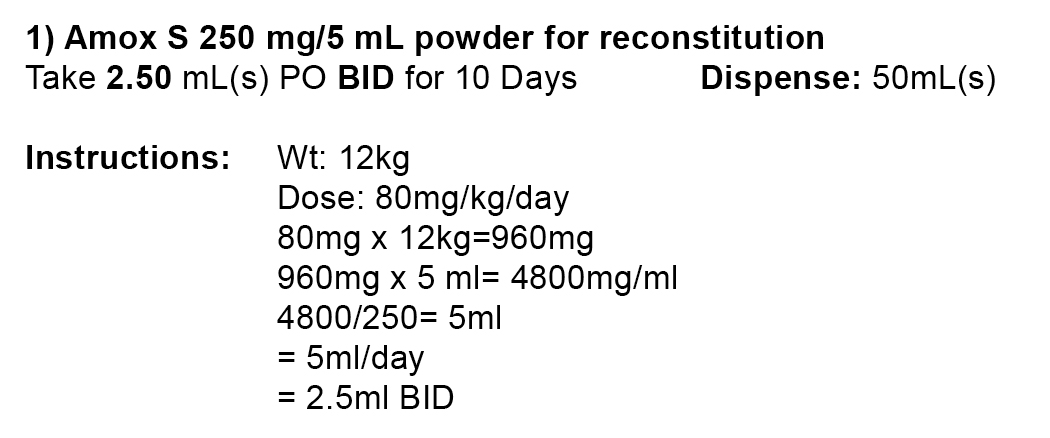By Ian Stewart R.Ph, B.Sc.Phm.
CALCULATION ERRORS
Pediatric patients often require individualized doses of medications based on the child’s age, weight, the indication for use and the recommended dosage regimen of the medication.
The determination of individualized doses usually requires the use of calculations which introduces an additional source of error and an increased risk of patient harm.
Pharmacists must therefore use extra care when assessing and calculating the appropriate dosages in high risk populations such as pediatric patients.

The above preprinted prescription was given to the mother of a one year-old child with acute otitis media. The prescription was taken to a local community pharmacy for processing.
The pharmacy assistant entered the prescription into the computer as printed and prepared the amoxicillin suspension for checking by the pharmacist.
Upon checking the prescription, the pharmacist correctly confirmed the child’s weight, the indication for use and the recommended dosage. The correct dose was calculated to be 480mg twice daily or 9.6mls of the 250mg/5mls concentration to be given twice daily. The printed dose was therefore only approximately one-quarter of the intended dosage.
Upon contacting the prescriber regarding the calculation error, she apologized and thanked the pharmacist for catching the error.
RECOMMENDATIONS:
- When dispensing medications for pediatric patients, always use the child’s age, weight, the indication for use and the recommended dosage regimen of the medication to ensure that the appropriate drug and dosage is being dispensed.
- Always use a calculator or another computing device to check the results for accuracy.
- Always double check pediatric doses for appropriateness as these patients are at an increased risk of experiencing harm due to the incomplete development of their defense systems.
- Wherever possible, a second individual should independently complete the calculation without prior knowledge of the results of the first calculation.
- Use standardized drug concentrations wherever possible.
- Though computer generated prescriptions can minimize medication errors due to illegible handwriting, be aware that new types of errors may be introduced.
- When similar errors involving computerized prescriptions are encountered, educate the prescriber regarding the apparent error in computer logic. Suggest that the software vendor be contacted as soon as possible to prevent future errors.
- Be aware of the following types of calculation errors which have been reported:
1. Interchange of pounds and kilograms. Many patients report their weight in pounds. However, doses are usually provided in terms of kilograms (e.g. mg/kg).
2. Calculating the total daily dose as a single dose. The dose of a specific drug may be listed as 10mg/kg q12h or 10mg/kg/day to be given at twelve hour intervals.
3. Performing the incorrect mathematical operation. For example, multiplying by two instead of dividing by two. Or, dividing the denominator by the numerator instead of dividing the numerator by the denominator.
4. Ten-fold errors due to the misplacement of a decimal point.













